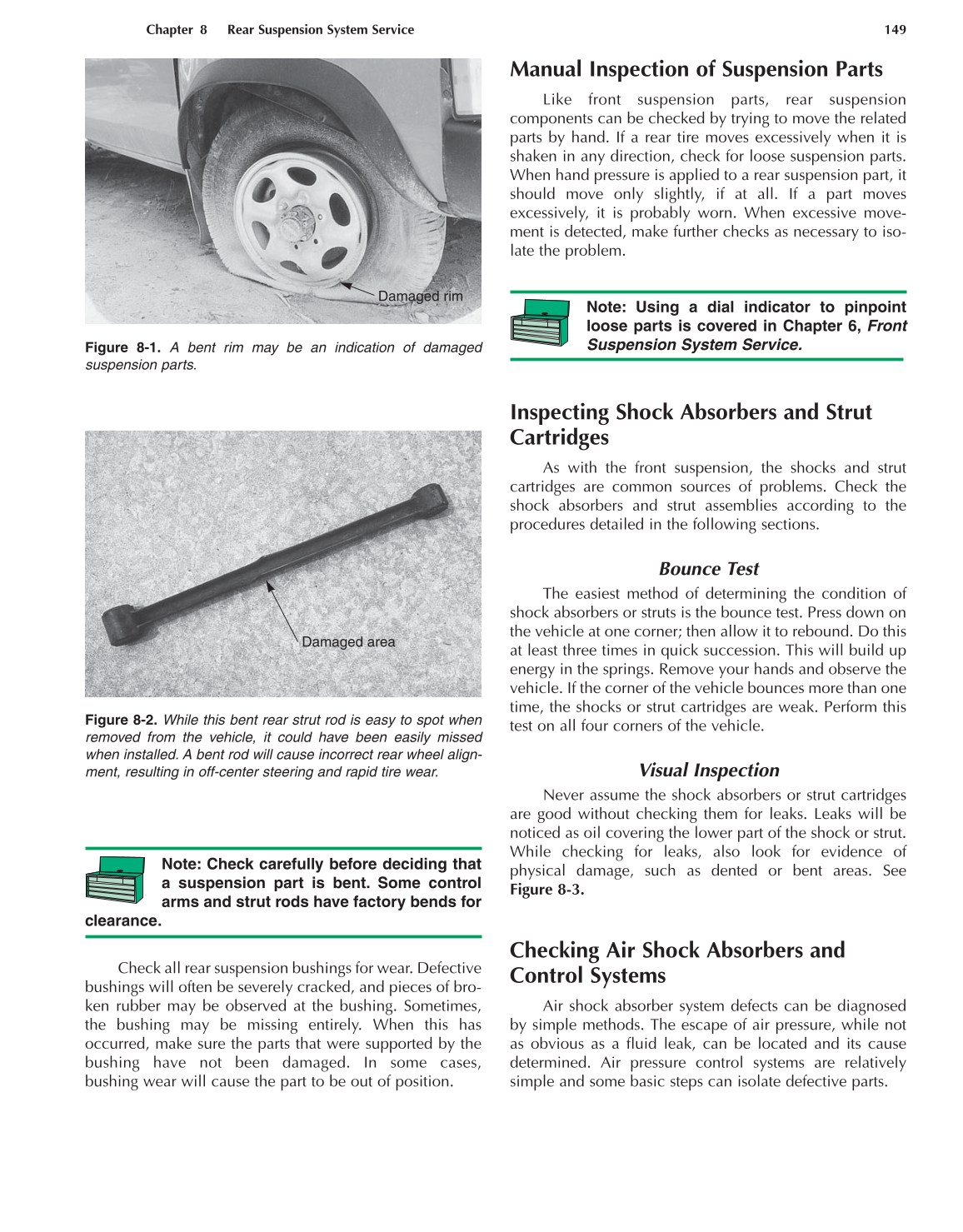Chapter 8 Rear Suspension System Service 149
Note: Check carefully before deciding that
a suspension part is bent. Some control
arms and strut rods have factory bends for
clearance.
Check all rear suspension bushings for wear. Defective
bushings will often be severely cracked, and pieces of bro-
ken rubber may be observed at the bushing. Sometimes,
the bushing may be missing entirely. When this has
occurred, make sure the parts that were supported by the
bushing have not been damaged. In some cases,
bushing wear will cause the part to be out of position.
Manual Inspection of Suspension Parts
Like front suspension parts, rear suspension
components can be checked by trying to move the related
parts by hand. If a rear tire moves excessively when it is
shaken in any direction, check for loose suspension parts.
When hand pressure is applied to a rear suspension part, it
should move only slightly, if at all. If a part moves
excessively, it is probably worn. When excessive move-
ment is detected, make further checks as necessary to iso-
late the problem.
Note: Using a dial indicator to pinpoint
loose parts is covered in Chapter 6, Front
Suspension System Service.
Inspecting Shock Absorbers and Strut
Cartridges
As with the front suspension, the shocks and strut
cartridges are common sources of problems. Check the
shock absorbers and strut assemblies according to the
procedures detailed in the following sections.
Bounce Test
The easiest method of determining the condition of
shock absorbers or struts is the bounce test. Press down on
the vehicle at one corner; then allow it to rebound. Do this
at least three times in quick succession. This will build up
energy in the springs. Remove your hands and observe the
vehicle. If the corner of the vehicle bounces more than one
time, the shocks or strut cartridges are weak. Perform this
test on all four corners of the vehicle.
Visual Inspection
Never assume the shock absorbers or strut cartridges
are good without checking them for leaks. Leaks will be
noticed as oil covering the lower part of the shock or strut.
While checking for leaks, also look for evidence of
physical damage, such as dented or bent areas. See
Figure 8-3.
Checking Air Shock Absorbers and
Control Systems
Air shock absorber system defects can be diagnosed
by simple methods. The escape of air pressure, while not
as obvious as a fluid leak, can be located and its cause
determined. Air pressure control systems are relatively
simple and some basic steps can isolate defective parts.
Damaged rim
Figure 8-1. A bent rim may be an indication of damaged
suspension parts.
Damaged area
Figure 8-2. While this bent rear strut rod is easy to spot when
removed from the vehicle, it could have been easily missed
when installed. A bent rod will cause incorrect rear wheel align-
ment, resulting in off-center steering and rapid tire wear.
